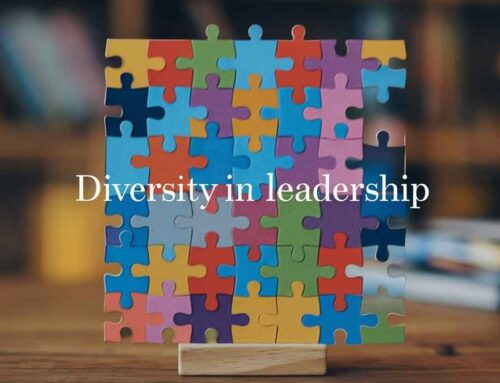
What Are the Leadership Trends Shaping 2025 and beyond?
Are you ready to lead in 2025 and beyond? The landscape of leadership is evolving fast and staying ahead means mastering the latest trends. In 2025, leadership trends are shifting due to technology, societal changes and new workplace dynamics.
To succeed, you need to adapt to these changes and embrace the key leadership trends that will define the future. In this blog post, we’ll dive into seven essential trends you must master to thrive as a leader in 2025 and beyond.
Understanding and applying these ideas will help you inspire your team, spark innovation and tackle tomorrow’s challenges.
Leadership isn’t static, it grows with the times. As Ronald Reagan once said, “The greatest leader is not necessarily the one who does the greatest things. He is the one that gets the people to do the greatest things.” This wisdom highlights the value of empowering others, a core idea that still drives leadership today.
But in 2025 and beyond, how you empower people will need to evolve. Let’s explore the seven key leadership trends that will shape the year ahead.
-
Embracing Artificial Intelligence and Automation
Technology is changing everything and Artificial Intelligence (AI) is at the forefront. In 2025 and beyond, AI and automation will be everyday tools for businesses. As a leader, you’ll need to know how to use them to make smarter decisions and boost efficiency. Imagine freeing your team from repetitive tasks so they can focus on big-picture ideas. That’s the power of AI.
But here’s the catch: your team might worry about job security. Will machines take over? Your job is to show them AI is a partner, not a threat. For instance, use AI to analyze data and predict trends, letting your team focus on creative solutions. Have you thought about how AI could enhance your leadership? Tools like AI coaching apps can even tailor training for your team.
The key is balance. Lean into technology, but keep the human touch. Leaders who master this trend will turn tech into a strength, not a stressor.
-
Fostering Inclusivity and Diversity
Diversity isn’t just a buzzword anymore, it’s a must. In 2025 and beyond, companies that don’t embrace inclusivity will lose talent and fall behind. You, as a leader, play a huge role in building a culture where everyone feels valued. Diverse teams bring fresh ideas and better results, but only if everyone has a voice.
So, how do you make it happen? Start by listening. Seek out perspectives from people who don’t usually get heard. Check your own biases, are they holding you back? It’s not enough to hire a diverse team; you need to make sure they feel included. Ask yourself: Does every team member feel safe sharing their thoughts?
In 2025 and beyond, fostering inclusivity will drive innovation. Leaders who get this right will build stronger, more creative teams ready for anything.
-
Leading Remote and Hybrid Teams
Remote work isn’t going anywhere. In 2025 and beyond, leading teams across distances will be a core skill. Whether your team is fully remote or hybrid, you’ll face challenges like keeping everyone connected and on track. How do you build trust when you’re not in the same room?
It starts with communication. Set up regular check-ins and use tools like Slack or Zoom to stay close. But don’t stop there, trust your team to get the job done. Micromanaging kills morale. Instead, set clear goals and let them run with it. Have you tried virtual team-building to keep spirits high?
The best leaders in 2025 and beyond will blend flexibility with accountability. Master this and your team will thrive no matter where they work.
-
Prioritizing Employee Well-being
Well-being is more than a perk, it’s a priority. In 2025 and beyond, leaders who ignore it will lose talent fast. People want to work where they feel cared for, not burned out. You need to create a space where mental and physical health matter as much as deadlines.
What does that look like? Offer flexible hours or mental health resources. Encourage breaks, don’t glorify overwork. And lead by example. If you’re always “On,” your team will feel it too. Are you setting boundaries or sending emails at 2 A.M.?
In 2025 and beyond, well-being will be a competitive edge. Show your team you value them as people and they’ll give you their best.
-
Adopting Agile Leadership
Change is speeding up and rigid leadership won’t cut it. Agile leadership, being flexible and quick to adapt, will define 2025 and beyond. You’ll need to make fast decisions and pivot when plans shift. It’s about staying nimble in a world that won’t slow down.
Here’s the trick: empower your team. Give them the freedom to own their work instead of hovering over every step. Agile leaders set the vision, then trust their people to make it happen. How fast can you adjust when things go off track?
In 2025 and beyond, agility will separate the great leaders from the rest. Embrace it and you’ll turn challenges into opportunities.
-
Enhancing Emotional Intelligence
Emotional Intelligence (EI) isn’t new, but it’s growing in importance. In 2025 and beyond, with diverse and remote teams, understanding emotions will be a game-changer. Leaders with high EI build trust, resolve conflicts and inspire loyalty. It’s about connecting on a human level.
You can grow your EI. Listen actively, really hear what your team says. Show empathy when they’re struggling. And reflect on your own reactions. Are you aware of how you come across? Small steps like these make a big difference.
In 2025 and beyond, EI will be the glue for strong teams. Work on it and you’ll lead with heart and impact.
-
Sustainability and Ethical Leadership
The world’s watching and leaders need to step up. In 2025 and beyond, sustainability and ethics will shape how people see your leadership. Employees and customers want organizations that care about the planet and fairness. Ignoring this isn’t an option.
Start small, cut waste, support ethical suppliers or go green where you can. But it’s more than actions; it’s values. Be transparent about your choices. Are your decisions good for people and the planet, not just profit?
Leaders who prioritize this will earn trust and respect. It’s leadership with purpose and it’s the future.
Conclusion
Leadership in 2025 and beyond won’t look like it does today. From AI to ethics, these seven key leadership trends will test your skills and push you to grow. Are you ready to embrace technology, champion inclusivity and lead with agility? The leaders who succeed will be the ones who adapt.
This isn’t the end of your journey, it’s the start. Keep learning and evolving. By mastering these leadership trends, you’ll be ready to guide your team through whatever 2025 and beyond brings. What’s your next step to prepare?
Call to Action
Want to stay ahead of the curve? Drop your thoughts on these trends in the comments or sign up for our newsletter for more leadership tips and insights!
FAQs on 7 Key Leadership Trends to Master in 2025 and Beyond
Q1: How can leaders use AI to improve decision-making?
A1: You can use AI to analyze large datasets, predict trends and automate routine tasks. This frees up your time to focus on strategic decisions and creative problem-solving, making your leadership more effective and forward-thinking.
Q2: Why is diversity important for leadership in 2025 and beyond?
A2: Diversity matters because it brings varied perspectives, boosts creativity and strengthens problem-solving. As a leader, fostering inclusivity ensures all voices are heard, which leads to better decisions and a more engaged team. How will you embrace this in your workplace?
Q3: What are the challenges of leading remote teams and how can leaders overcome them?
A3: Leading remote or hybrid teams comes with hurdles like communication gaps, maintaining team unity and ensuring productivity. You can tackle these by using reliable communication tools, setting clear goals and building a culture of trust and accountability.
Q4: How can leaders support employee well-being in the workplace?
A4: You can support your team’s well-being by offering flexible work options, providing mental health resources and encouraging a healthy work-life balance. Creating a supportive environment shows your team you care about them as individuals, not just employees.
Q5: What does agile leadership mean and why is it important?
A5: Agile leadership means staying flexible, adaptable and quick to respond to change. It’s crucial because it helps you navigate uncertainty, make fast decisions and empower your team to innovate. Are you ready to adopt this approach in 2025?
Q6: How can leaders develop their emotional intelligence?
A6: You can build emotional intelligence by practicing self-awareness, listening actively, showing empathy and communicating effectively. Seeking feedback and committing to continuous learning also help you connect better with your team.
Q7: Why is ethical leadership important for sustainability?
A7: Ethical leadership ensures your decisions are made with integrity and a focus on long-term impact. It builds trust, enhances your reputation and supports sustainable practices that benefit both your organization and society as a whole.
As the great Nelson Mandela once said, “It is better to lead from behind and to put others in front, especially when you celebrate victory when nice things occur.” This quote reminds us that leadership trends in 2025 and beyond are about empowering others while staying adaptable and ethical. How will you use these leadership trends to inspire your team? Start exploring these ideas today and shape a brighter future for your organization!















I am constantly searching online for articles that can aid me. Thanks!